Technology overview

Konica Minolta has long been engaged in the development of the piezo inkjet printhead and its application to various industrial products.
The following pages provide an overview of Konica Minolta's inkjet technology, along with accompanying technical documents and some general technical knowledge.
Environmental information is also included.
About Inkjet
Inkjet technology makes use of tiny ink droplets to facilitate direct printing without the device coming into contact with the printed surface. Because this technology enables non-contact printing, it can be applied to all kinds of media and is now being introduced for use in a wide range of fields ranging from general purpose to industrial. The simple structure that combines the inkjet printhead with the scanning mechanism offers the merit of keeping device costs down. In addition, since they require no plates, inkjet printers offer the advantage of major savings in printing set up time compared to conventional printing systems that require a fixed printing block or plate, etc. (e.g. screen printing).
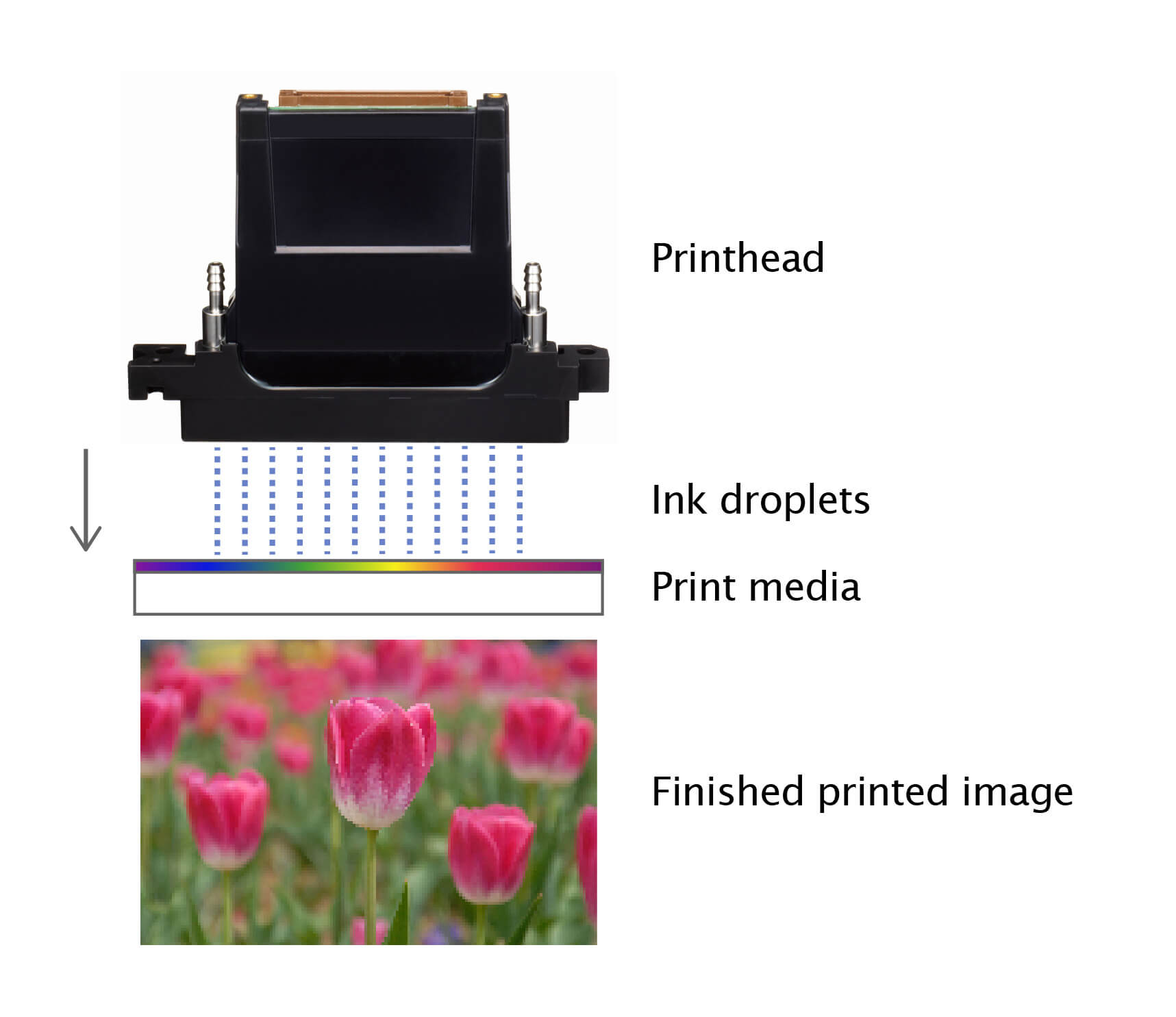
Scan printing and Single-pass printing
There are two types of inkjet printing systems: scan printing and single-pass printing. In scan printing, the printhead carriage reciprocates in the sub-scanning direction (laterally in respect of the print media), making several passes to complete the image printing process. In single-pass printing, the printhead carriage remains in a fixed position and completes image printing in a single pass while the print material is conveyed underneath. Due to their high-speed printing capability, single-pass systems are coming into use in the field of industrial printing where high productivity is required.
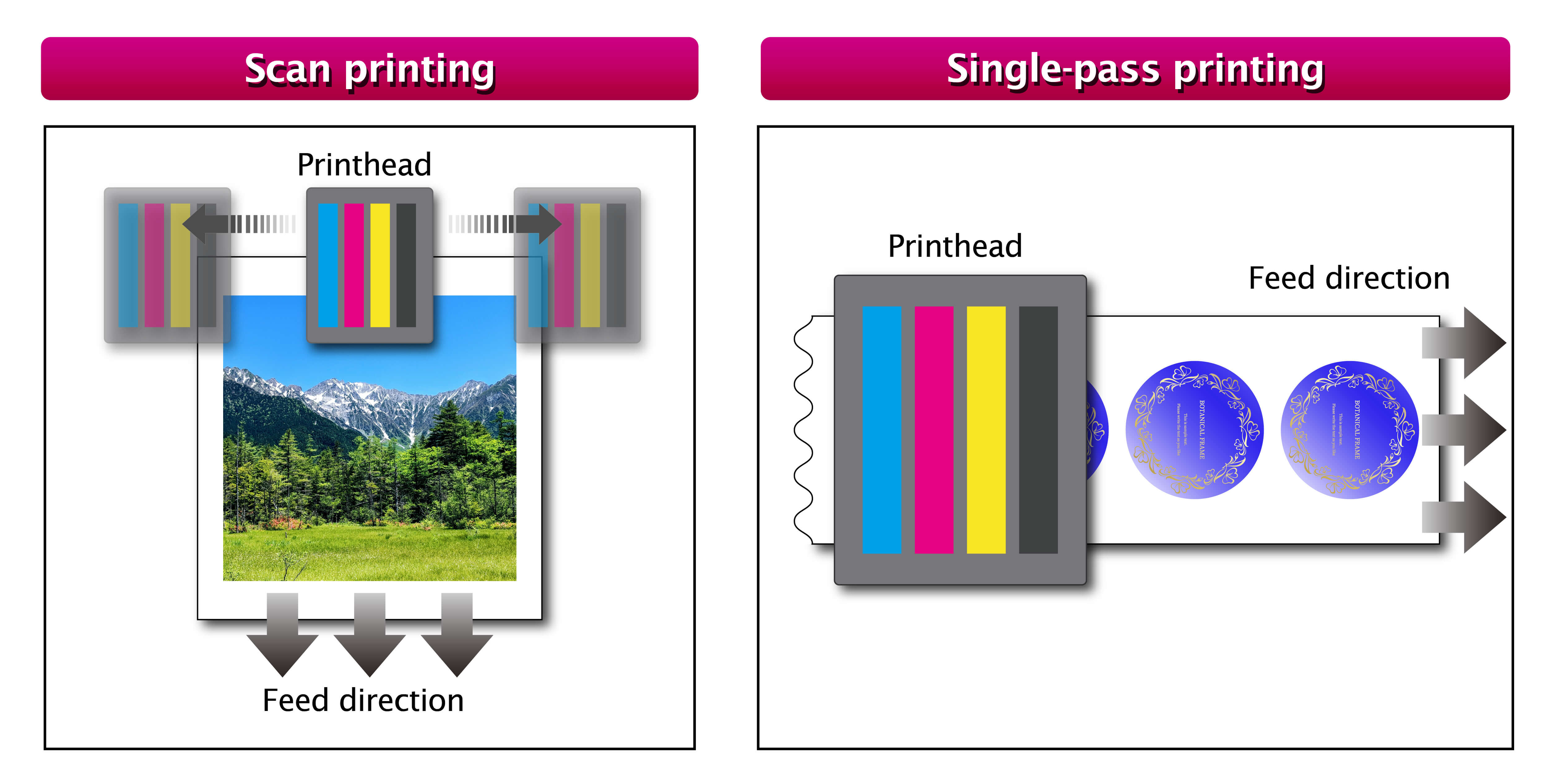
Printhead Technology
- 3-cycle Drive Printhead
Konica Minolta's on-demand piezo printhead makes use of 3-cycle drive technology that offers energy-conserving benefits. This technology divides nozzles into three groups for timed ink-ejection control. Because this approach features a structure that allows high nozzle density, it is effective in the development of high-image quality inkjet printheads.
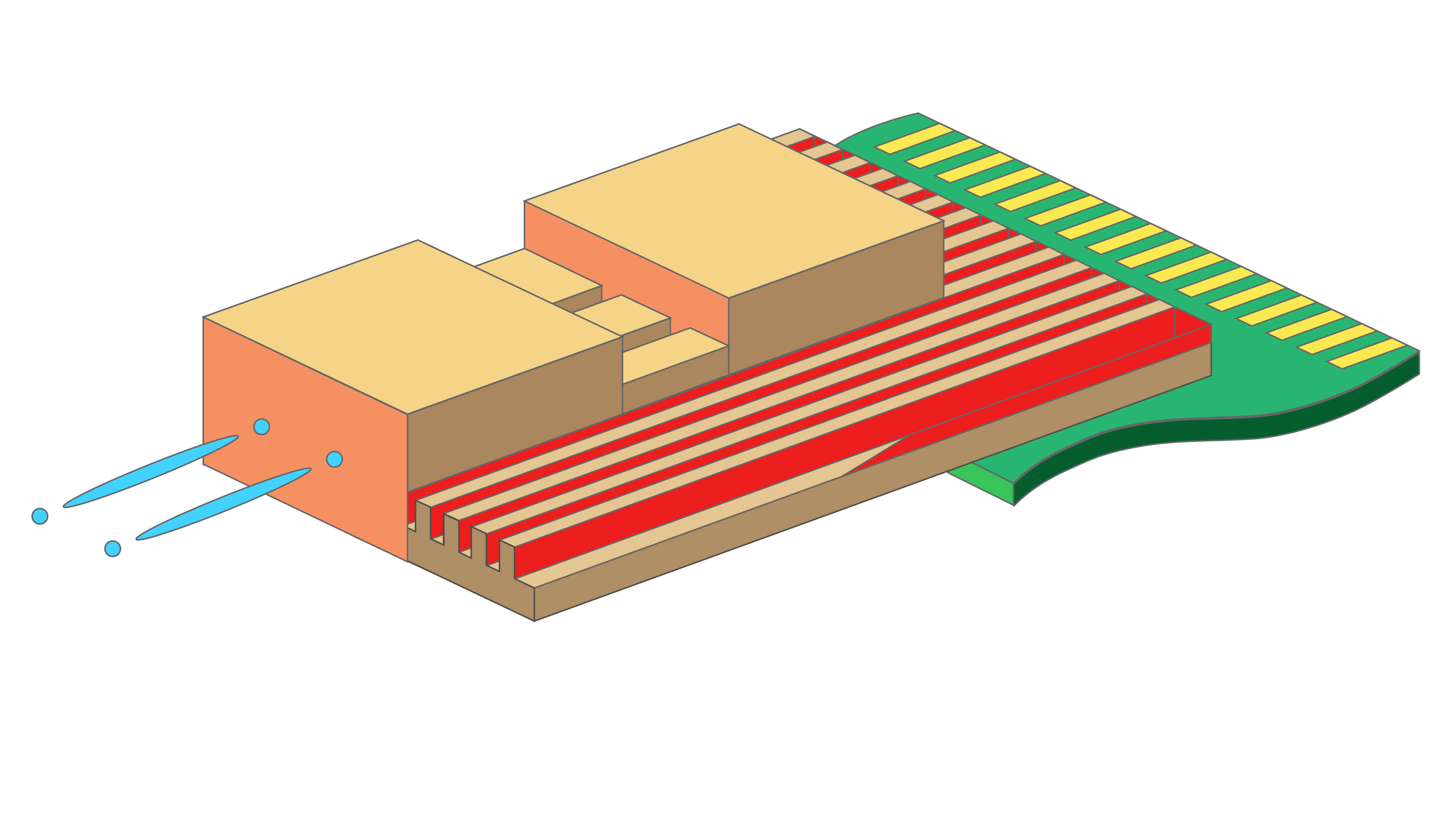
Konica Minolta Printhead Structure
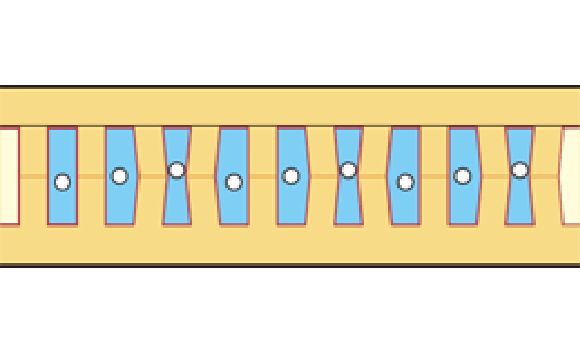
Printhead Structure (Nozzle surface)
- 3-cycle drive head principle
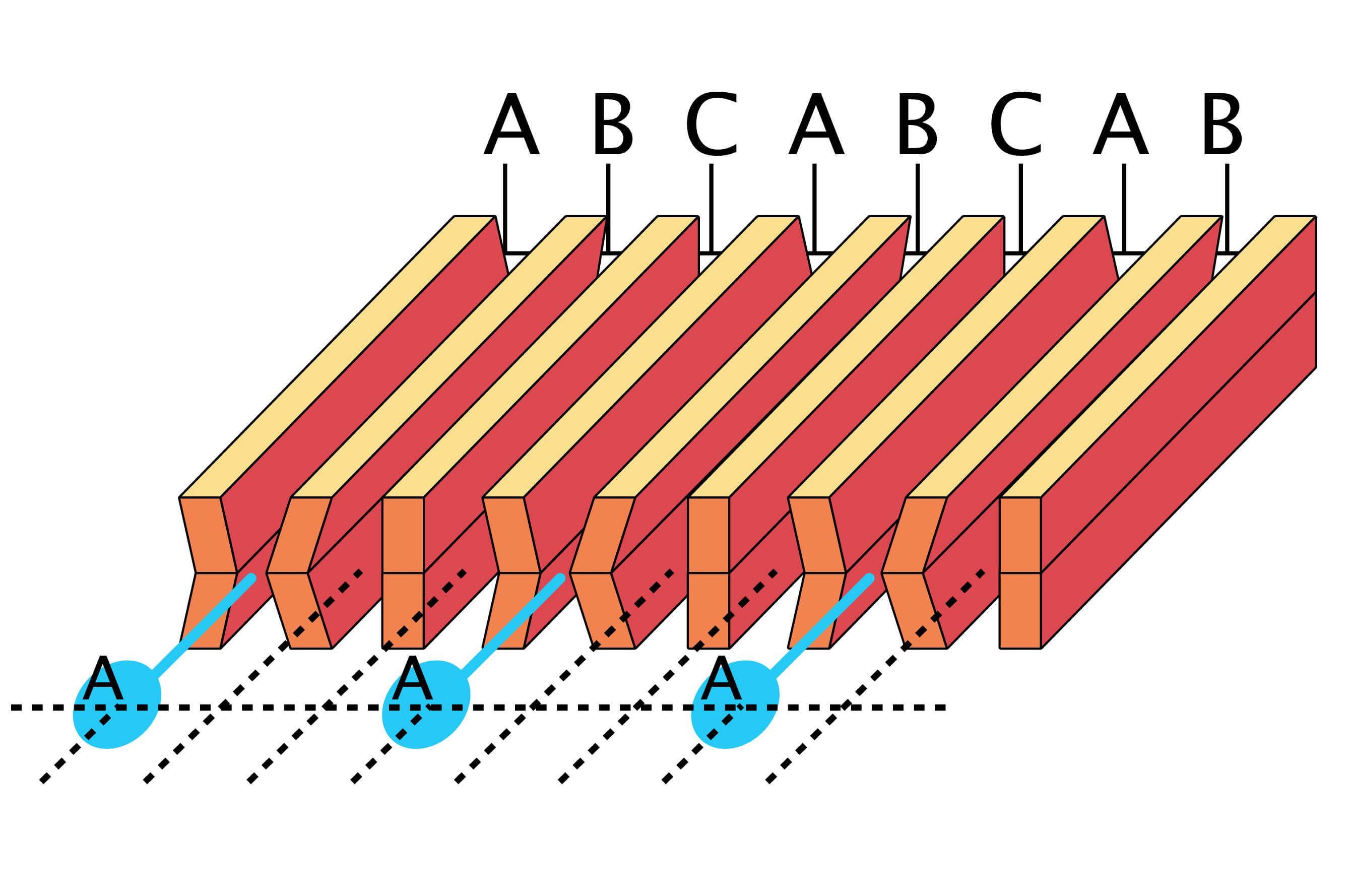
Firstly, ink is ejected from channel-A to form part of the image.
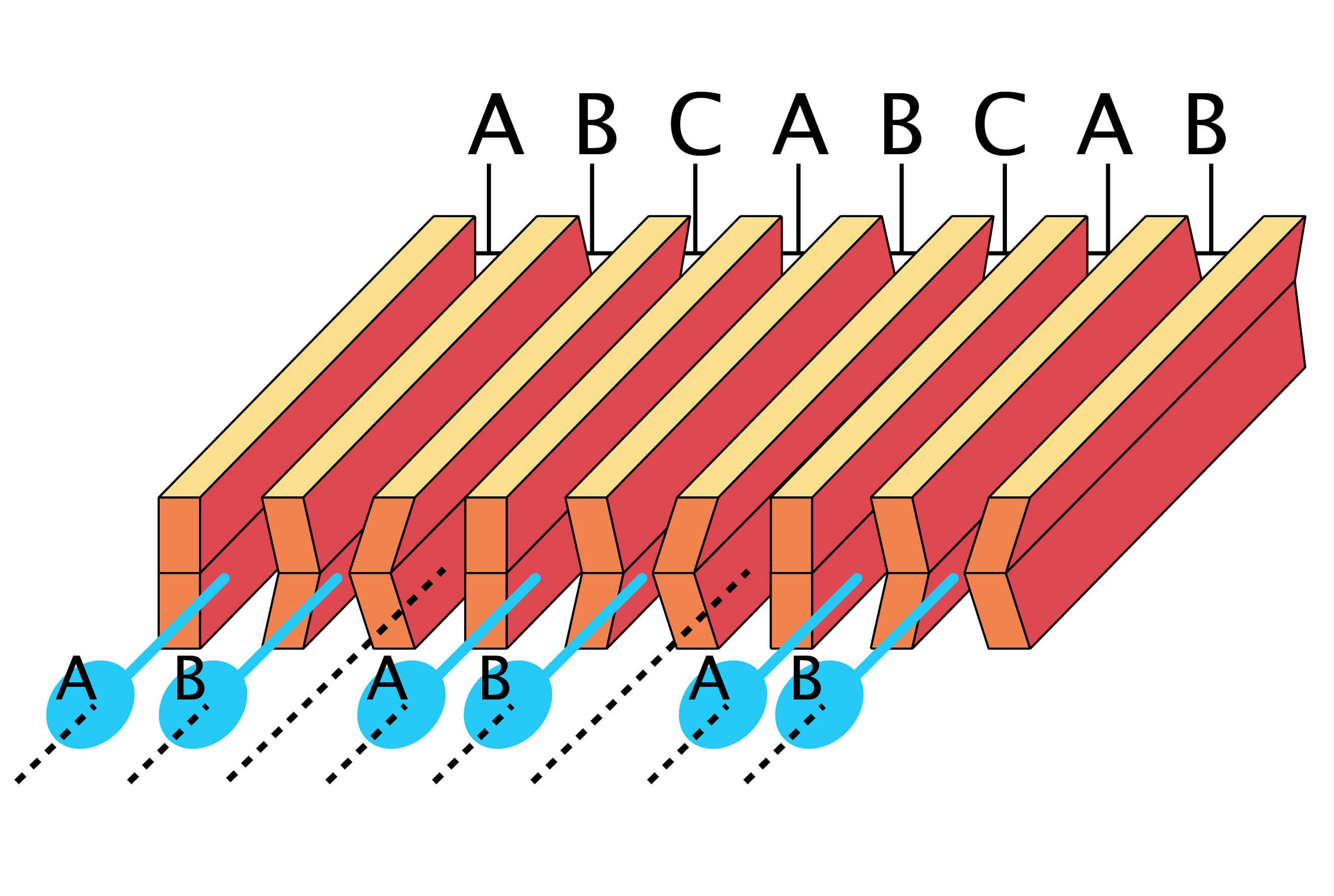
Next, after ejection from channel-A, ink is ejected from channel-B to form the image.
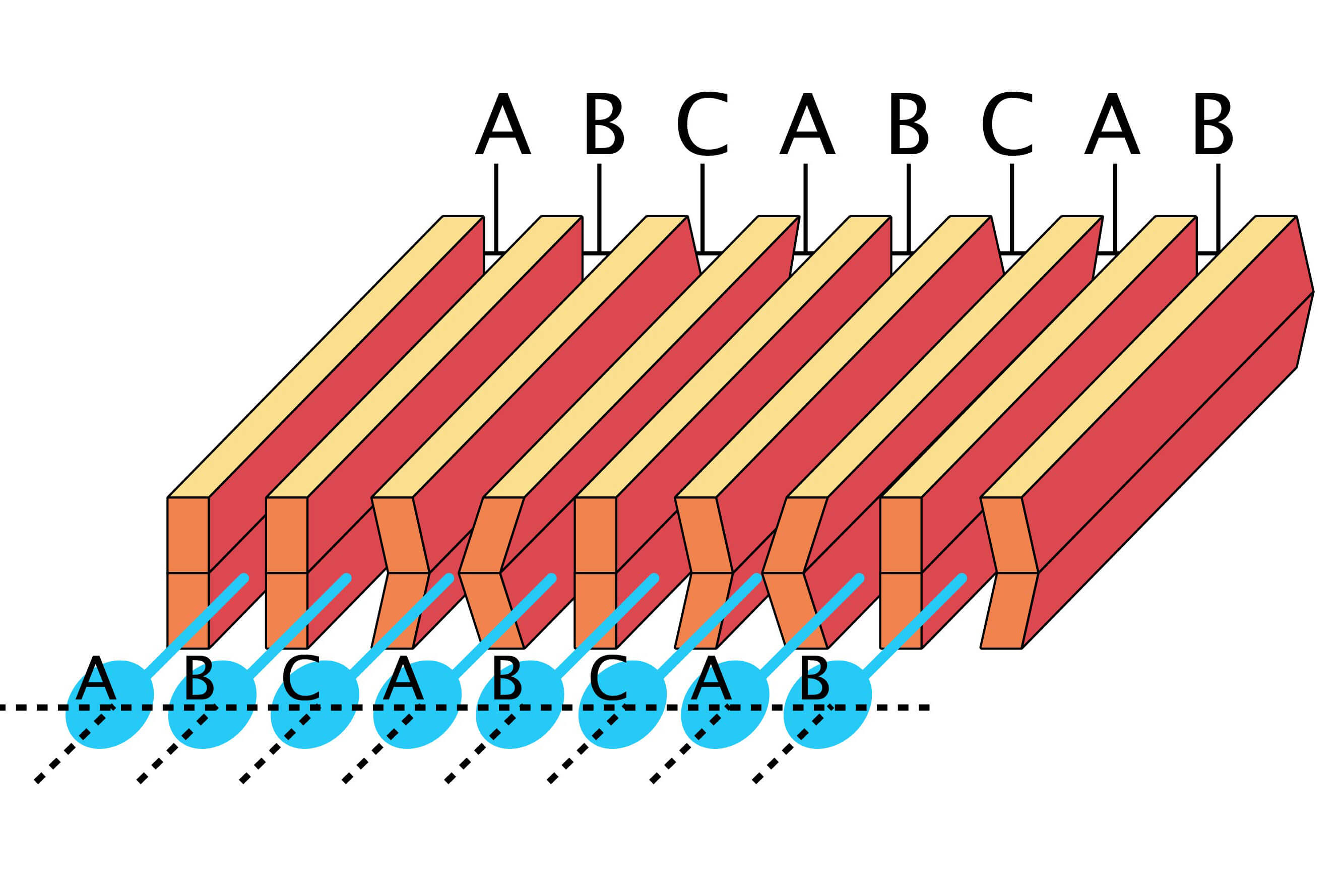
After ejection from channel-B, ink is ejected from channel-C to complete the image.
- Reduction of Power Consumption to Approximately 50%
Compared to the previous KM512 Series, the KM1024 Series features a far more compact construction to realize a reduction in power consumption of approximately 50%. Development of a new architecture has made it possible to shorten the ink channel length and reduce capacity, resulting in a major reduction in power consumption. Energy conservation, a merit of the piezzo system, has been further enhanced.

Comparison of new (right) and existing (left) architectures
- High Durability for Industrial Applications
Industrial applications require the use of all kinds of inks. Durable components and optimum materials have been selected to meet the needs of all kinds of inks from low-viscosity types such as water based inks to high-viscosity types such as UV cured inks.
- Precision Processing and Assembly Technology
Precision processing technology (e.g. laser processing, dicing processing and material processing), one of Konica Minolta's core technologies, makes precision processing and assembly of the main components and materials for the printhead possible. In addition, our outstanding fully-automatic all-nozzle ejection performance inspection technology makes it possible to realize mass-production of high-quality products and establish a production system capable of speedy supply.
- Share mode Piezo Inkjet Printhead
Konica Minolta inkjet heads are able to handle a wide range of inks to meet the requirements of various industrial applications. The principle of shear mode piezo actuation with shared wall structure allows lower power consumption as well as a high-density nozzle array. On-demand dot size modulation, sometimes referred to as grey-scale mode, enables the printing of high quality images and functions to increase productivity. All the development work is based on advanced computer simulation techniques that can precisely predict the droplet formation process resulting from differential ink characteristics.
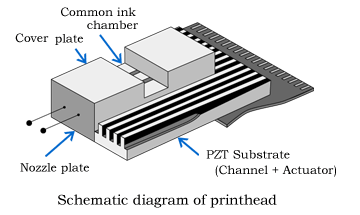
Comparison of new (right) and existing (left) architectures
- The principle of ink ejection
Micro scale channels made from piezo electric material are made to contract by the application of an electric charge. As the channels contract, ink contained in the channel is forced out through the nozzle as a droplet. As the channel returns its original state, capillary action causes ink to flow into the channel making it ready to produce the next drop.
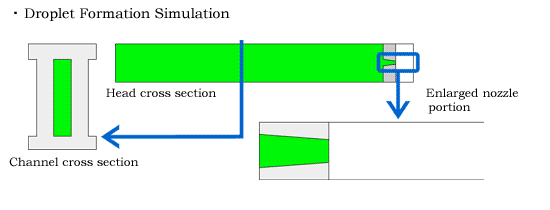
* Orage indicates pressurized state. Blue indicates depressurized state.
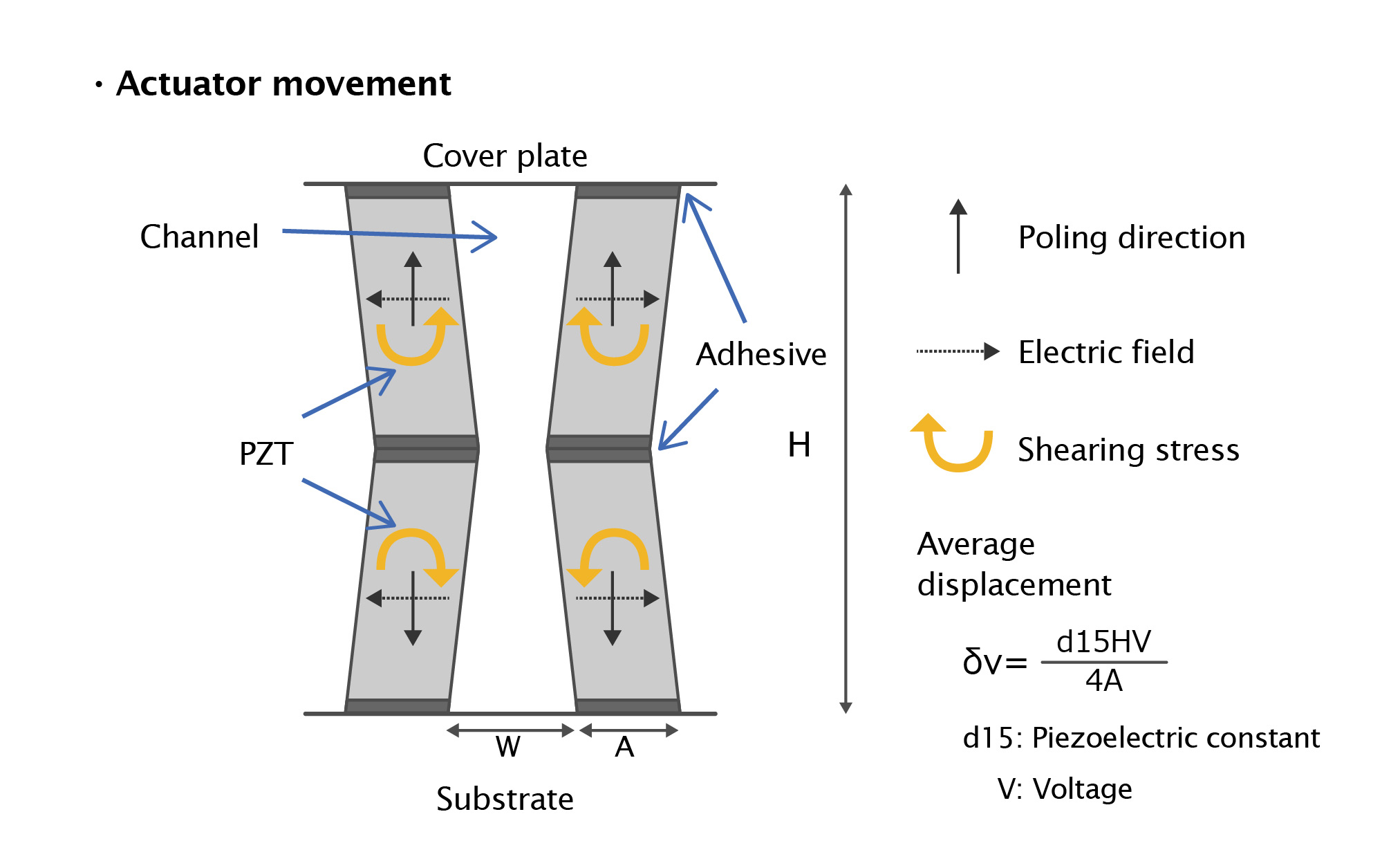
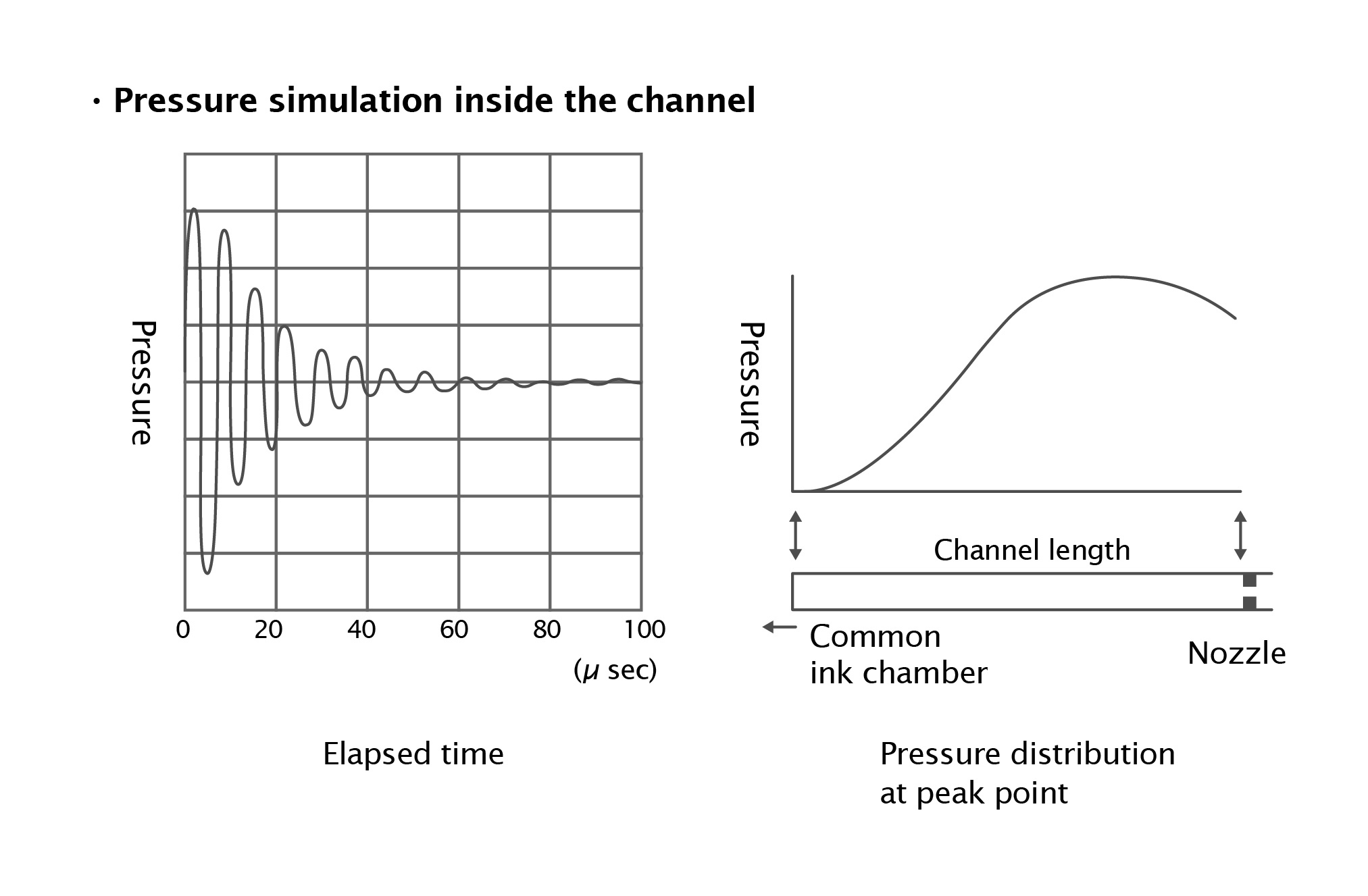
Ink Technology
- Textile Printer Ink
The textile printer inks developed for Nassenger Series are designed to meet the highest standards worldwide relating to environmental safety and human health. Dispersed dye inks suitable for polyester and acetate are available, as are reactive inks for a wide range of substrates including cotton, silk and wool.
| Dispersed Dye | Reactive | |
|---|---|---|
| Cotton | NA | Excellent |
| Rayon | NA | Excellent |
| Hemp | NA | Good |
| Silk | NA | Good |
| Wool | NA | Good |
| Nylon | NA | Good |
| Polyester | Excellent | NA |
| Acetate | Excellent | NA |
